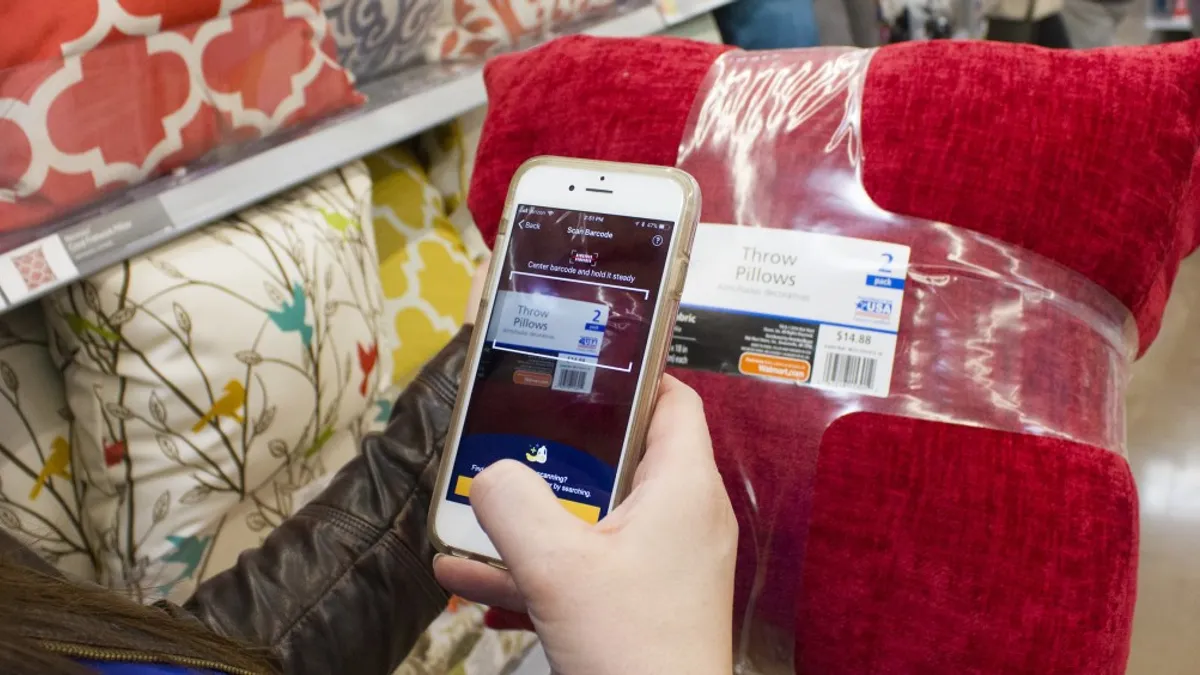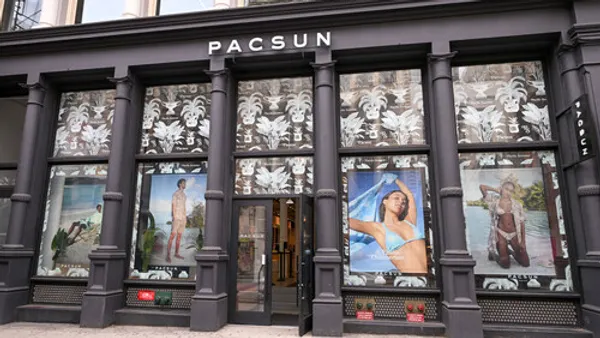Dive Brief:
-
Technologies such as consumer data tracking, frictionless payment, in-store mobile device engagement and wayfinding for in-store navigation are among those that rank highest in consumer awareness and acceptance, according to the new Retail Innovation Radar report from The HighStreet Collective.
-
The rankings in the report are based on the agency’s third-quarter 2018 analysis of retailer deployments and shopper acceptance of 12 key retail technologies affecting brick-and-mortar retailers, although they don’t take into account specific technological advances with these innovations.
-
On a scale of 1 to 10, data tracking achieved a score of 5.3, leading the field of 12 and making it the most "shopper-ready" of the innovations studied, while in-store mobile interfacing, frictionless payment and wayfinding came in at 4.8, 4.7 and 4.5, respectively. Robotics, meanwhile, had the lowest ranking, 0.9, of the 12 featured technologies.
Dive Insight:
The dozen technologies addressed in this report cover everything brick-and-mortar retailers are now deploying or contemplating deploying in their stores. In addition to the four mentioned above, the remaining eight include virtual reality, augmented reality, artificial intelligence, personalization, in-store voice interfaces, beacon notification, robotics and touch-and-gesture technology.
The report also highlights how important each of these 12 technology innovations is perceived to be to the future of retailers. It appears that the perceived significance to retailers and acceptance by shoppers don’t always match.
For example, augmented reality and artificial intelligence are two of the most talked-about technology innovations in retail today, and retailers have been quick to embrace AR in particular by releasing a flood of mobile AR apps into the market. Yet, in High Street Collective’s report, AR and AI both registered low on the shopper acceptance radar.
That doesn’t mean retailers should drop their AR projects and put all their time and resources into data tracking innovations. Retailers in different segments have disparate needs. AR apps are still new enough that many shoppers have yet to use them. But as consumers become aware of these apps, AR may rise to be viewed as more “shopper-ready." Early indicators show that frictionless payments will be a rapid climber, fueled by the quick expansion of Amazon Go and similar concepts.
As retailers continue to dabble with tech innovations, knowing where they are in terms of perceived readiness of shoppers to embrace them might help retailers make smarter decisions about how to prioritize resources.














